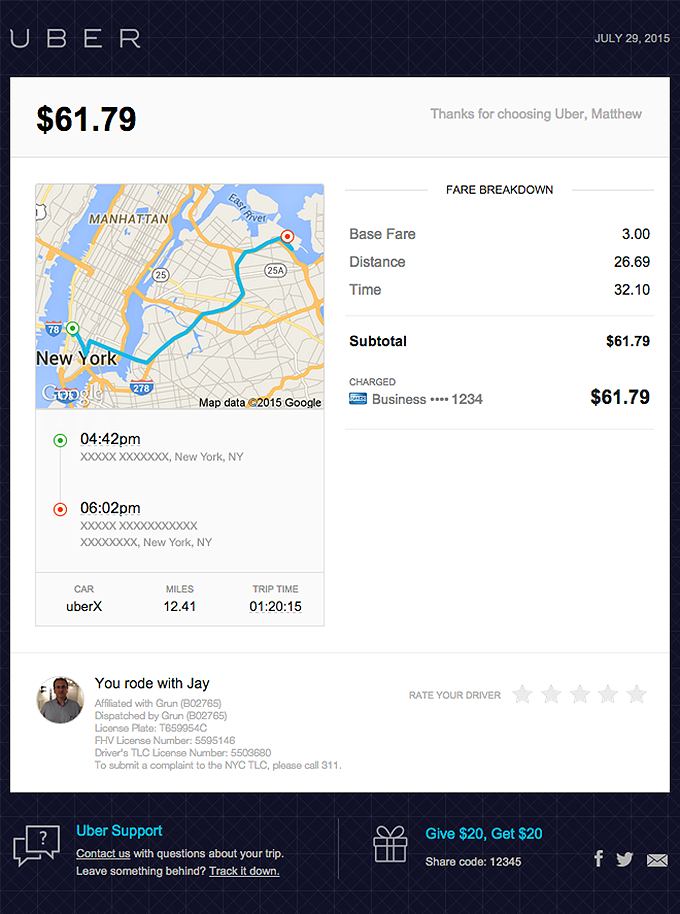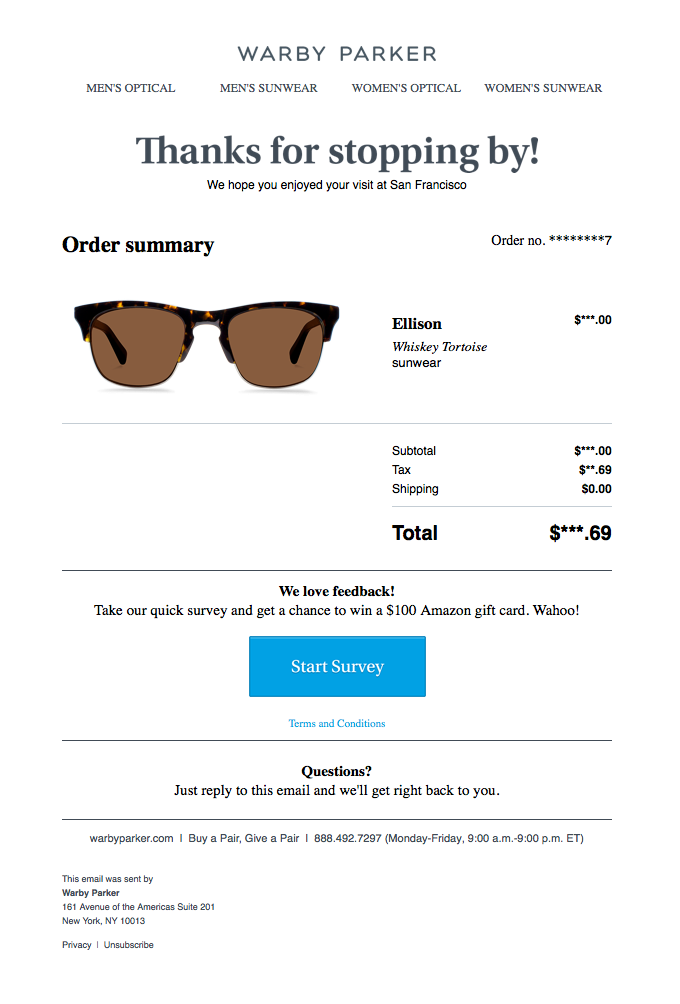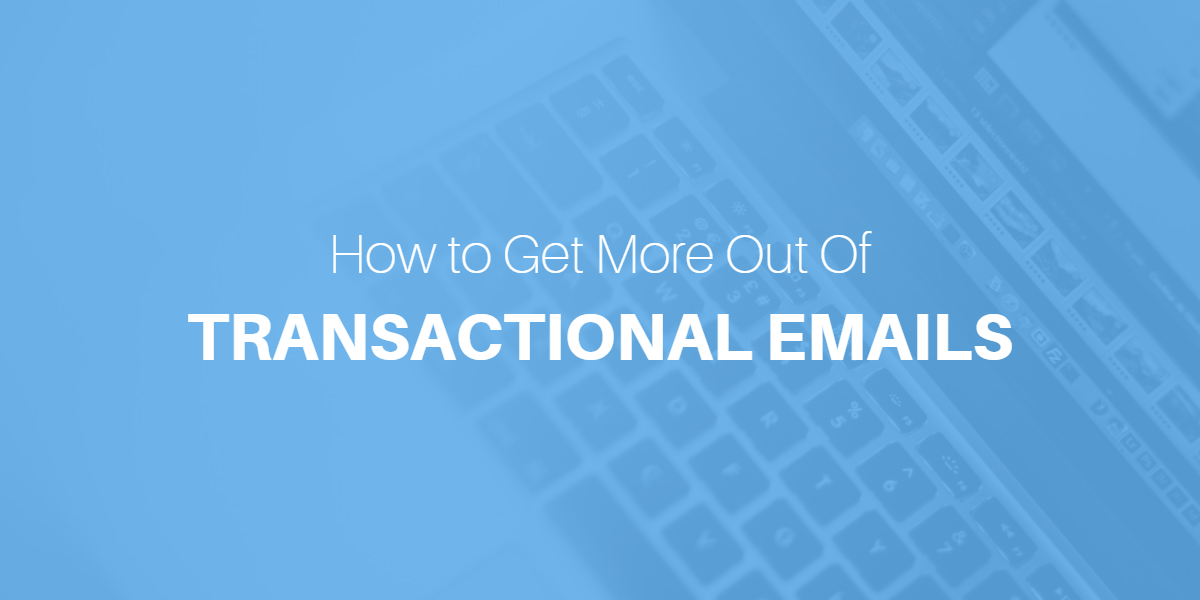
Transactional emails are messages sent automatically in response to defined subscriber actions, such as order confirmation emails sent right after an online purchase.
Most companies use transactional emails only to send basic information, but there are ways to get more out of these types of emails, which is a good idea since the open rates hover around 100%.
Here are examples of the types of emails sent automatically to subscribers and customers, i.e. the types of emails you can optimize to get better results:
- Subscription confirmation
- Password reset
- Order confirmation
- Thank you for completing our survey
- Shopping cart abandonment
- Invoices
- Webinar invitations
Each of the emails above has a main role, but it’s important you don’t lose sight of the big picture in order to unlock their full potential.
So why are transactional emails so effective?
There are a few reasons why people engage more with transactional emails. The most important are:
- Personalized Content: Transactional emails are sent to an individual subscriber based on their actions, which means the content of the message is highly personalized and always relevant to each person.
- Send Time: These emails are usually sent immediately after a certain action takes place (like making a purchase). They land in an inbox at the time when the user is most engaged. This is why the open rate of transactional emails is much higher than average email blasts.
So how can you get more out of your transactional email sends? And what are the best practices for transactional emails in 2016 and beyond?
It All Starts with Your Email Template
The majority of transactional emails are basic plain text. Consider using HTML instead.
HTML allows you to design a great-looking email template and monitor the engagement of your audience so you can measure opens and click-through rates.
Step one is to create a custom email template that is in line with your brand’s visual identity. This will help you build brand awareness among recipients.
You also don’t need to restrict the content only to basic information. Analyze your emails and consider other ways you can use them.
Perhaps you could include links to useful blog posts in your order confirmation email. Links to posts describing certain product features or giving advice on how to use it properly is often a good idea.
Consider also including a signup form to your newsletter because there’s a good chance that recipients would like to receive more valuable information and stay in touch with your brand.
Next, Review Form Fields and Subject Lines
The form field is the first thing people see when they open their inbox. Use your name or the name of your company in order to earn the trust of your audience.
Another important element is the sender address. It should be reliable and enhance your credibility. If it begins with the words “no-reply”, your audience may understand it as “do not try to contact us, because we don’t have time and don’t feel like reading your email.”
Opportunity #3: Cross-Selling & Up-Selling
You can increase the purchase value by offering complimentary products, a premium version, or a wider service package.
Think of an e-commerce site selling coffee brewing equipment. After making a purchase, each customer receives a thank you email. This email can offer complimentary products (e.g. coffee, cleaning tablets, filters). You could also send a time-limited promo code in order to motivate reluctant customers to purchase additional products that compliment their original order.
In the example email below, Dollar Shave Club offers products for sale in addition to confirming the customers upcoming order.
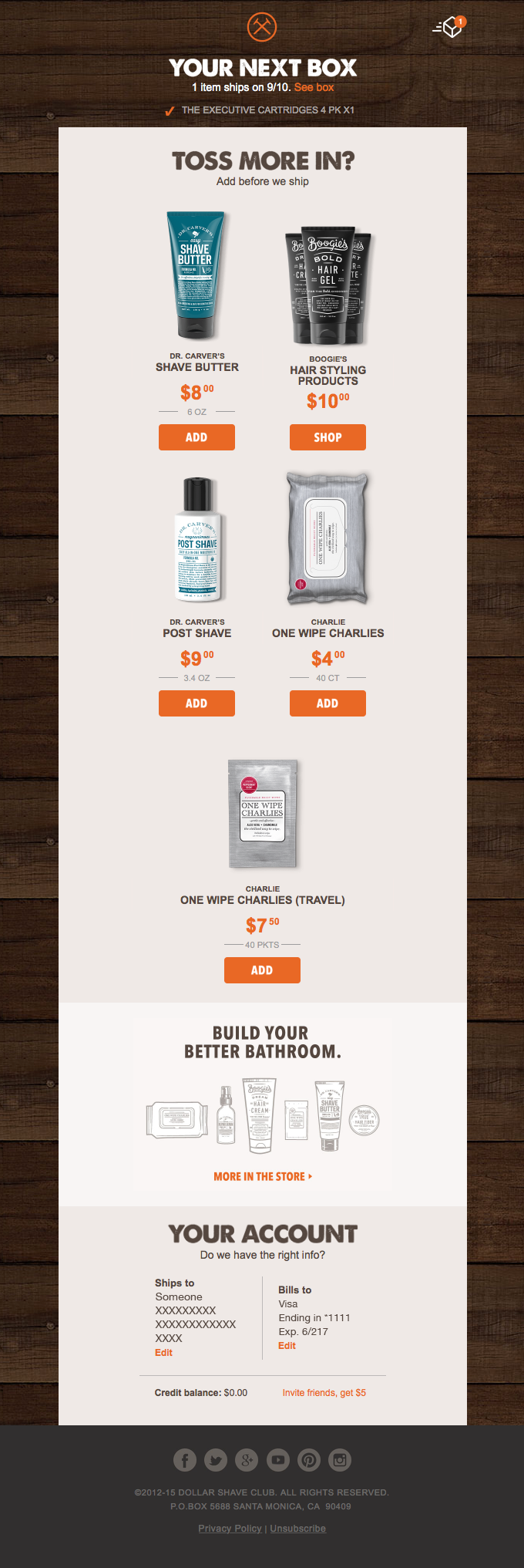
If you’re a SaaS provider, you can send an email to a selected group of free trial users and offer them an upgrade to a premium account. Analyze customer activity and choose the best time to offer the upgrade.
If you present the right benefits at the right time and provide a clear call to action, you’ll definitely see more conversions and generate more sales.
Opportunity #4: Referrals
Transactional emails are an excellent opportunity to ask customers to refer your company to their friends. For example, you can run a loyalty program that rewards the most engaged customers and boosts the amount of referrals your company gets.
Dollar Shave Club accomplishes this in their email below that asks customers to invite friends in order to earn a$5 credit. This is a great way to create more awareness for your product or service.
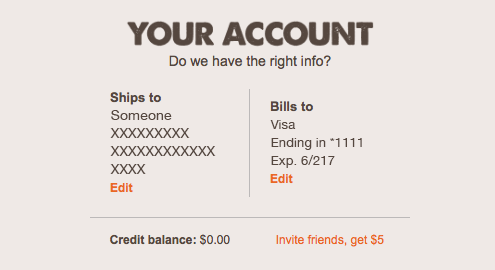
Opportunity #5: Customer feedback
If you want to improve your products and the quality of your services you need to get to know your customers. To do this, you can use transactional emails to send a survey asking customers about their needs, wants, and preferences.
Opportunity#6: Run Regular A/B Tests
Another opportunity is to test different versions of an email in order to find the best-performing version. Each industry has its own rules and each business serves customers with unique preferences and specific expectations, which means it’s impossible to predict what will work and what won’t.
It’s a good idea to test individual elements of your transactional emails, such as subject lines, the content, call to actions, and/or template design. If you use a professional email marketing platform, A/B testing is really easy. Regular testing allows you to increase your emails impact and increase email marketing ROI.
Summing It Up
As we’ve learned transactional emails are among the most frequently sent email marketing messages, and their open rates are usually significantly higher than regular newsletter emails.
Take some time to analyze your email marketing communication and to think of new ways to improve because even small changes compounded across thousands of emails can make a big difference.
The bottom line is that transactional emails should be an integral part of every company’s email marketing funnel. You can use them to grow your email list, generate additional purchases, and increase brand awareness. And don’t forget to run regular A/B tests in order to check which elements of an email make the greatest impact.
Hopefully this short guide on transactional email best practices will help you to improve your emails, learn more from your customers, and generate more sales in the process.
About the Author
 Ireneusz Klimczak (@irekklimczak) is a Content Marketing Expert at GetResponse. He is passionate about creating valuable and engaging content for all customers. He’s always eager to advise on email marketing strategies that bring results!
Ireneusz Klimczak (@irekklimczak) is a Content Marketing Expert at GetResponse. He is passionate about creating valuable and engaging content for all customers. He’s always eager to advise on email marketing strategies that bring results!










